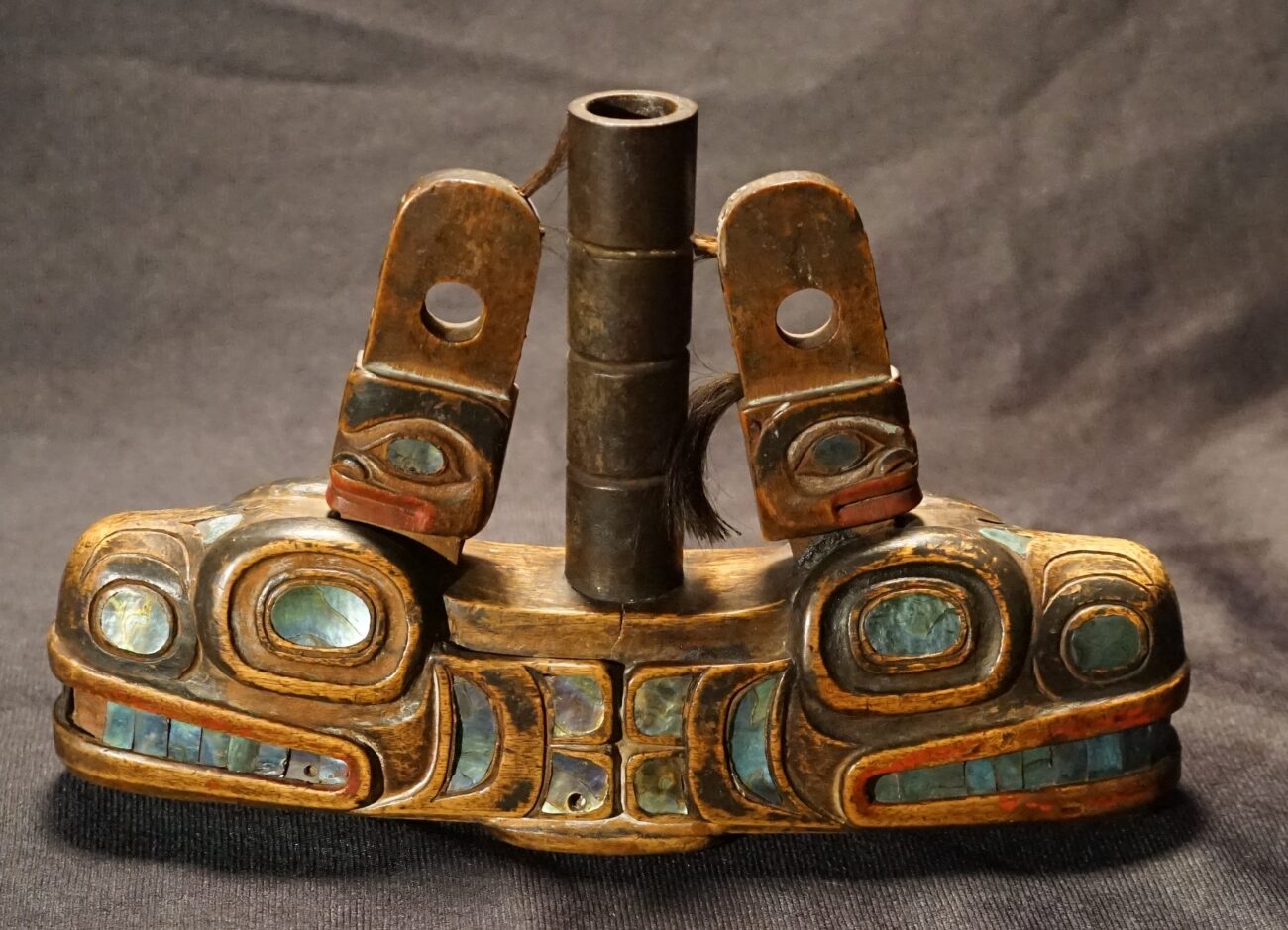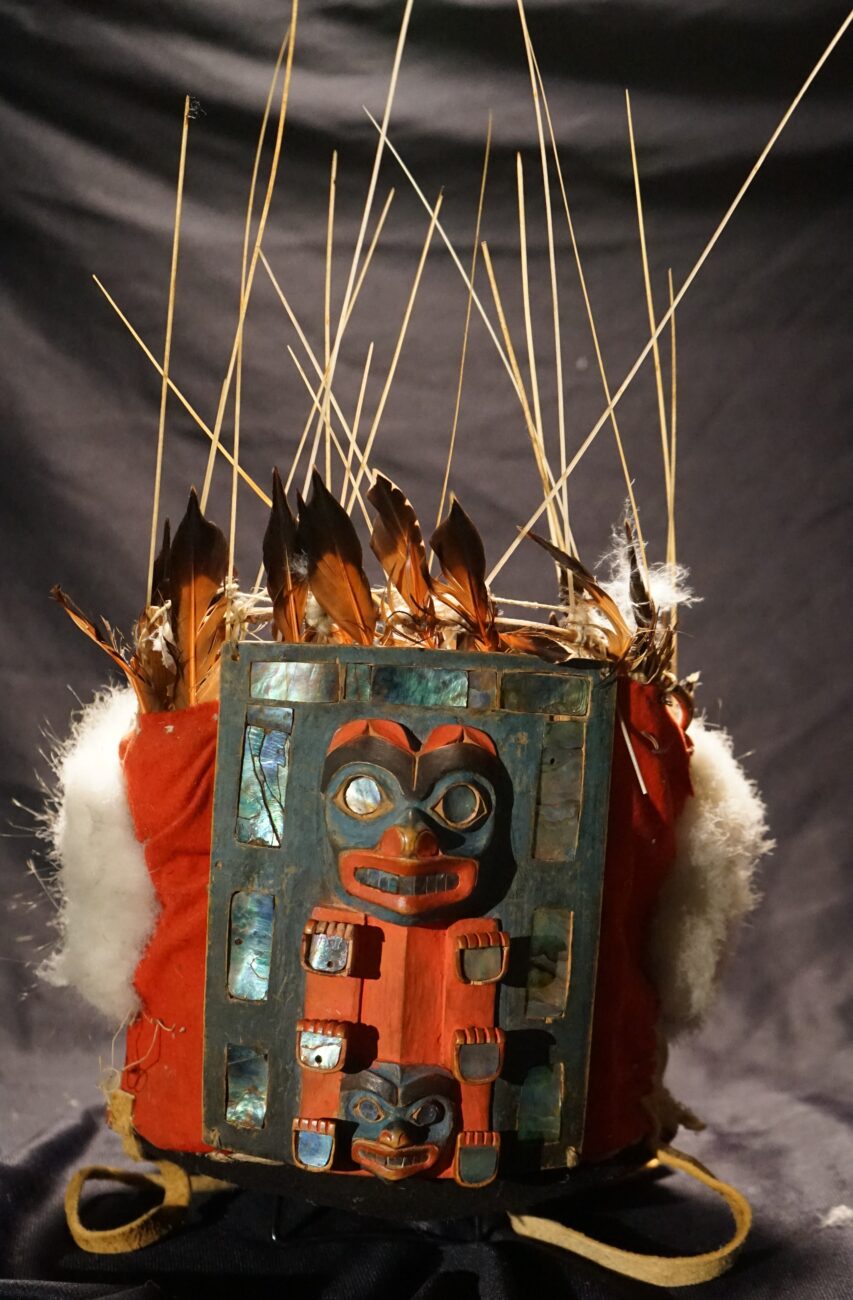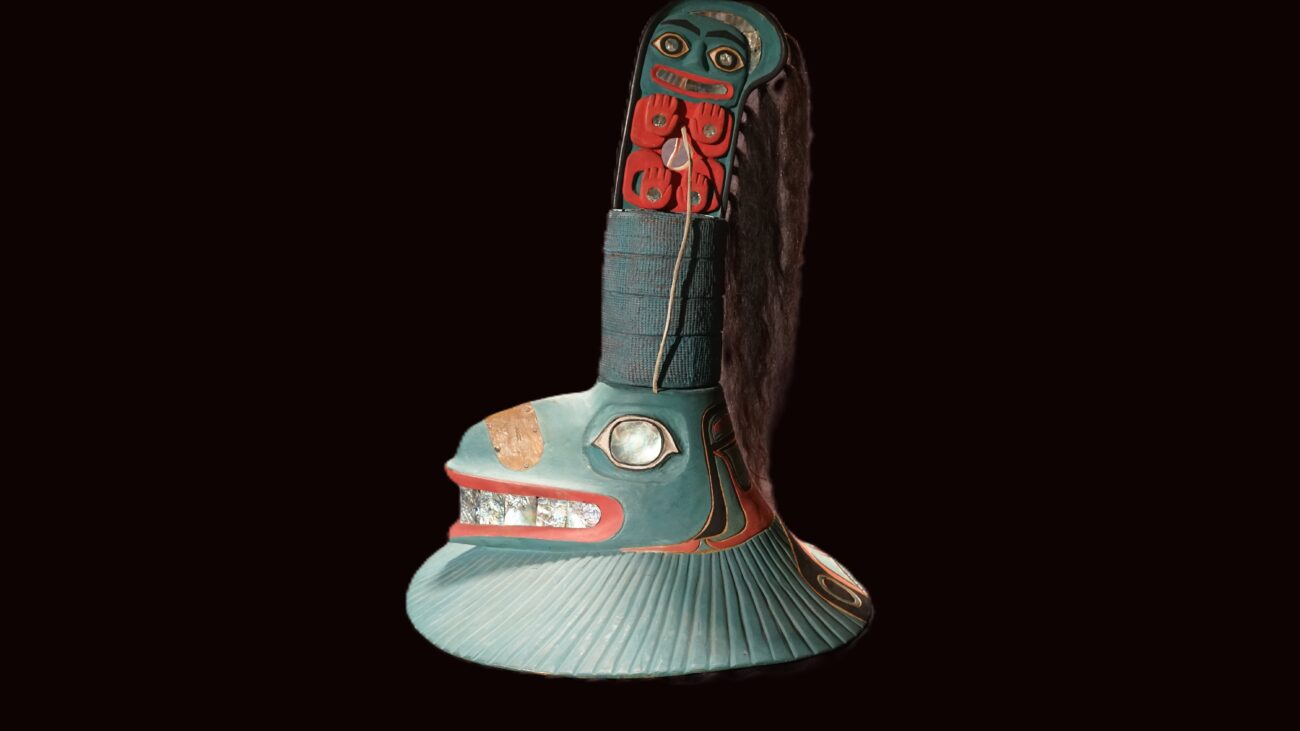
A brown tobacco pipe sits in a display case – it’s about the length of two hands and features inlayed blue minerals from abalone shells. It has two faces looking away from each other and the shank stretches up in the center – it tells a story of the Gunakadeit, which is a sea monster in Tlingit culture. It’s one of four repatriated Tlingit clan objects that the Nolan Center is showcasing.
“These are all fairly old, fairly venerable objects,” Tyler Eagle, collection manager at the Nolan Center, said. “I would hazard to guess that they’re probably around 100 years old each.”
Thanks to the Native American Graves Protection and Repatriation Act (NAGPRA), the at.óow, or cultural Tlingít property items, includes two dozen objects that were shipped back to Wrangell clans over the last few years. The Act ensures that items are returned back to the Tribes they originally came from.
While Tribal governments have asked for them back, it’s been a long process because museums have held them for decades. Proving ownership is necessary and can be difficult, especially when the items are ancient. Between 1921 and 1944, Axel Rasmussen, Wrangell’s school’s superintendent, collected over 800 of Wrangell’s Indigenous items. The Portland Art Museum held them in the Axel Rasmussen Collection.
Eagle said it was quite the legal battle to return the at.óow to the Naanya.Áayi Clan.
“I believe it took some of these items over a decade of work to get them back up,” he said.
At.óow on exhibit
Along with the four items on exhibit, three poster boards display other repatriated items that are not physically here because of their size.
“There’s a couple of different sort of lineages associated with these items,” Eagle said. “You’ve got the general sort of Naanya.Áayi symbolized by some of these marmot sort of crest symbols there.”
The Marmot Mask is the property of Chief Shakes, which is the title for the Naanya.aayí chief leader that the clan passes down generationally. The mask represents fleeing and surviving the great flood.
The Killerwhale Hat that sits next to the pipe is a replica. Eagle said it’s about 50 years old, whereas the original, that’s not on display, is around 125 years old. It represents courage.
“We also have the original hat. It was one of the objects that was repatriated,” he said. “We’re displaying the replica just because the original has some structural issues. It’s currently in a protective case that we’re hoping it can stay in until we get something permanent set up.”
“Without having a hat you couldn’t have a clan leader“
Gaalgé Kevin Callahan is the clan leader of the Naanya.Áayi and house master, which is a role that plays a high stature in the family. If an event happens at the house, the house master opens it and welcomes everyone. He said most of the at.óow come from his family’s line. They belong to the whole clan though. Police took them from his grandmother’s grandmother when she passed away in the 1930s. He said it took 30 years for the items to come home after his uncle started to reclaim them under NAGPRA.
Callahan said that the Burke Museum at the University of Washington had the Marmot Mask, the Killerwhale Hat and the Sea Monster Pipe in their collection.
Callahan said that hopefully in the next few years, 25 more at.óow will come home.
“Right now we’re working with the Denver Art Museum who’s really not wanting to budge,” he said. “They have multiple objects there. One of the biggest objects they have is the Mother Bear, also called Many Faces, which is the screen that sits in front of the Shakes House.”
He said that a repatriated object allowed for last year’s mourning potlatch to happen.
“Without having a hat you couldn’t have a clan leader because if you have a hat somebody has to speak,” Callahan said. “So having the hat back I was able to sit as a clan leader now and then speak. We were able to cry and let our tears go and pay homage to all of our ancestors who have passed that we haven’t properly been able to cry for.”
Eighty-four years passed since the last mourning potlatch.
At.óow might be swapped around
Eagle, the Center’s collection manager, said the exhibit will be up throughout the rest of the tourist season, probably until October or November. The objects might be swapped around – as their owners might be checking them out for events.
He said ideally the repatriated items would go in a permanent and secure exhibit in the museum and the Nolan Center is currently in the process of looking for funding.
Wrangell’s Nolan Center will unveil the repatriated objects at its new exhibit in its main lobby on May 18.


Update (5/17/24 at 1:38pm): Shakes is the title for chief, not the clan leader.











